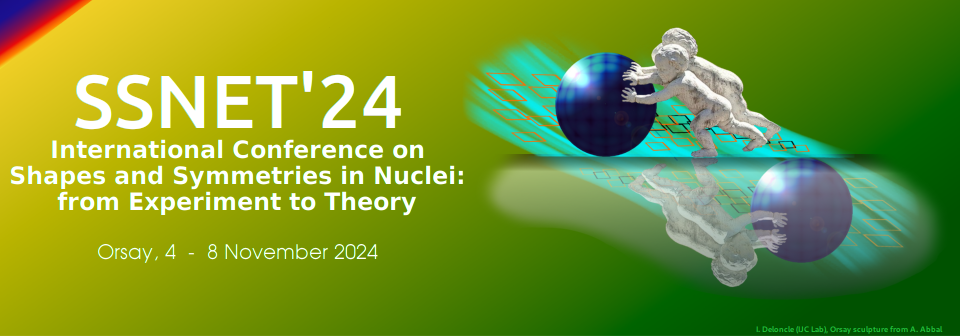Orateur
Description
In the study of thermal neutron-induced fission of \textsuperscript{235}U, a dispersion in the experimental data concerning the average prompt neutron multiplicity $\overline{\nu}$ as a function of the pre-neutron mass $A$ of the fragments was observed [1]. To identify the source of this dispersion, we have conducted a Monte Carlo simulation of the measurement process carried out with the 2E technique. The input data include the pre-neutron fragment mass yield ($Y(A)$), kinetic energy distribution $E$, number $n$ of prompt neutrons emitted, and their corresponding kinetic energy $\eta$ relative to the center of mass (CM). These data are based on the experimental results by Al-Adili et al. [1].
In the simulated experiment, the fragments with pre-neutron masses $(A,A')$ arrive at the detector after emitting $(n,n')$ neutrons, with resultant masses $(m,m')$, and due to recoil effects, kinetic energies $(e,e')$. In each fission event, the quantities simulated as measured are the masses $(A_s,A_s')$ and kinetic energies $(E_s,E_s')$, which are calculated using the relations $A_s+A_s'=236$ and $A_s E_s=A_s' E_s'$, representing the conservation of mass and linear momentum conservation, where $E_s\approx e/(1-n/A_s)$ and $E_s'\approx e'/(1-n'/A_s')$.
Based on the $n$ values corresponding to the mass $A_s$ we construct the curve $\overline{\nu}_s (A)$. The results show that $\overline{\nu}_s (A)>\overline{\nu}(A)$ in regions around $A=115$ and $A>150$, respectively. The source of these discrepancies lies in the dispersion of $e$ relative to $E$ due to the recoil effects, which produces a dispersion in the calculated mass relative to the pre-neutron one. The discrepancy is greater if, in each fission event, the correction is performed using $\overline{\nu}(A)$ instead of $n$. Using the same input data, we also simulated the measurement of the kinetic energy distribution $e$ as a function of mass $m$. The result demonstrates that $\sigma_e(m)$ exhibits a peak around $m=109$, in agreement with the experimental data from Belhafaf et al. [2]. The origin of this peak, not simulated in the pre-neutron curve $\sigma_E(A)$, is due to dispersion of $m$ and $e$ relative to pre-neutron mass $A$ and kinetic energy $E$ values.
In summary, to trace back to the primary distributions of quantities associated with the fission fragments, it is necessary to adjust the results of the simulation of the experiment with the values from the experiment itself.
References
[1] A. Al-Adili et al., “Prompt fission neutron yields in thermal fission of U 235 and spontaneous fission of Cf 252,” Phys. Rev. C, vol. 102, no. 6, 2020.
[2] D. Belhafaf et al., “Kinetic energy distributions around symmetric thermal fission of U234 and U236,” Zeitschrift für Phys. A Atoms Nucl., vol. 309, no. 3, pp. 253–259, Sep. 1983.

